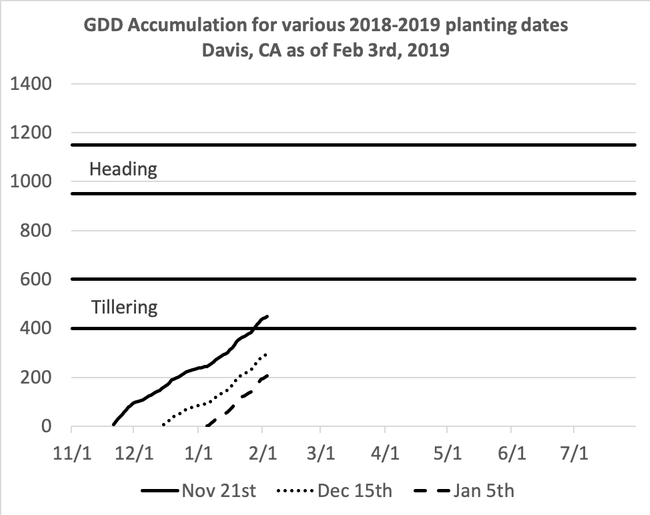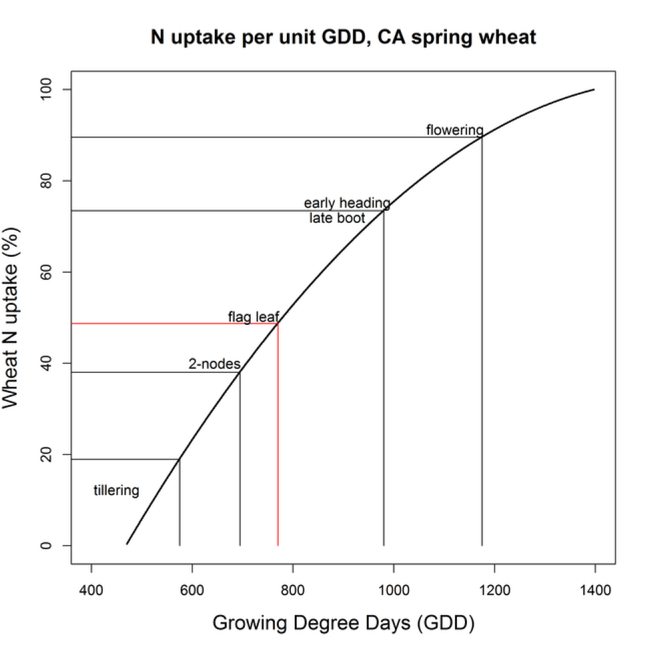Much like other parts of California, the Southern Sacramento Valley has seen some substantial rainstorms this season. The weather patterns left growers with a few narrow planting windows spread out over the last two months. This combined with the fact that growing degree day accumulation has been steeper than average (largely due to warmer nights) means that wheat growth stage can vary significantly from one field to the next. Now would be a good time to assess wheat stand, weed pressure, sample for soil nitrate levels, and start planning for nitrogen applications as fields enter the tillering phase of development.
As has been discussed in previous blog posts, nitrogen applications are most efficient when done during the tillering phase of development.
Based on weather station data from Davis, CA, wheat planted around the 21st of November should be in the tillering phase now (Figure 1). This will vary slightly in the surrounding areas of the southern Sacramento Valley, but you can use the UCANR degree day calculator to estimate GDD in your area more precisely (instructions below).
Other planting windows in mid-December and early January may have a bit more time (Figure 1), but growers should keep a close eye on the weather and growing degree day accumulation when deciding when to schedule top-dress applications.
Tillering begins in wheat around 400 GDD and typically lasts until roughly 600 GDD. Nitrogen use efficiency is greatest when nitrogen applications occur during tillering but well before flag leaves begin to emerge (Figure 2).
Figure 1: Growing degree accumulation (GDD: max = 86F; min = 45F) for various planting windows between this year's storms. These may vary slightly between areas like Dixon, Zamora, and Davis.
|
How to calculate growing degree days for wheat in your area:
- Go to the site http://ipm.ucanr.edu/WEATHER/index.html
- Scroll down to the Degree-day Calculator at the bottom of the page.
- Enter “45”(F) for the Enter lower field, and “86”(F) for the Enter upper field.
- IMPORTANT: Under Method of Calculation open the scroll down menu and choose “Double triangle”.
- IMPORTANT: Under Upper Cutoff Method open the scroll down menu and choose “Horizontal or none”. Click Calculate.
- Select the most relevant county for your area (you can scroll down to find whichever you are looking for).
- Choose a start date (this will the date of the first rains after your planting date if you planted dry, or the planting date if you planted into moisture), and the end date (yesterday's date), click Continue.
- Choose the closest relative weather station in your area, be sure to select one that is operational until today, i.e. 2005 to present.
- Choose Air Temperature and click Calculate in the section below the table.
- You will see cumulative growing degree days displayed for your area in the column on the right.
|
Figure 2 Wheat N uptake as a percentage of seasonal total expressed as a function of GDD (GDD: max = 86F; min = 45F).


